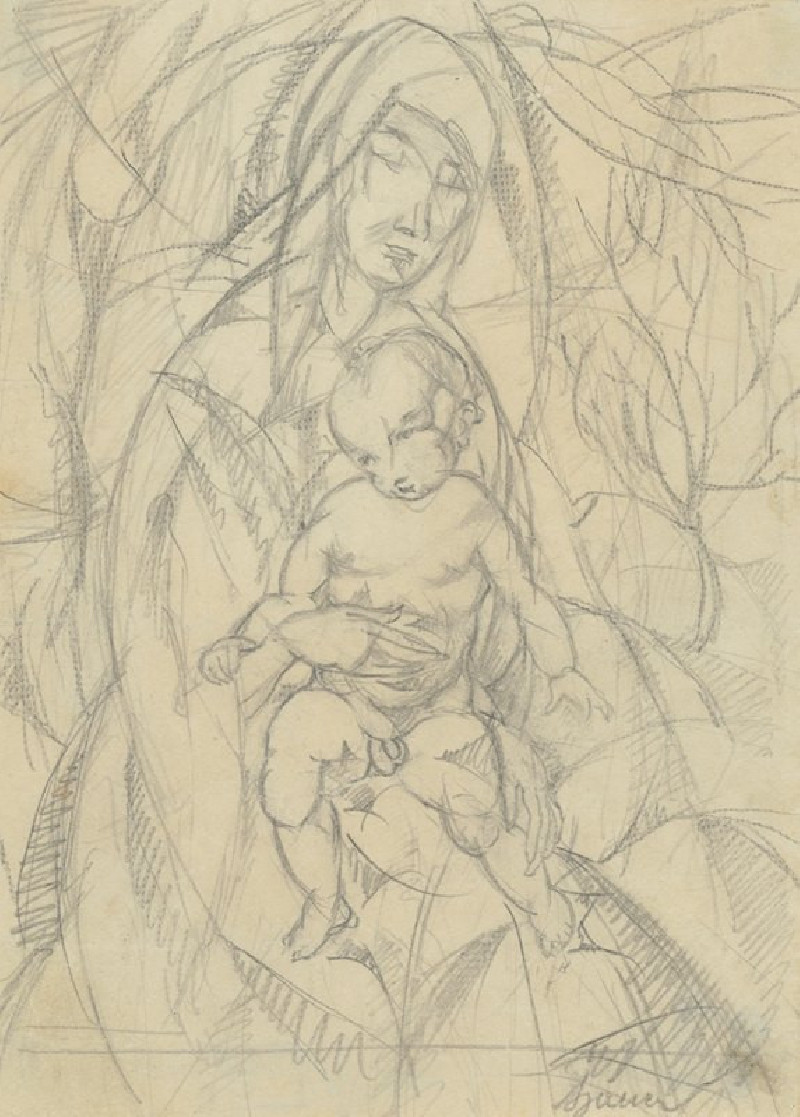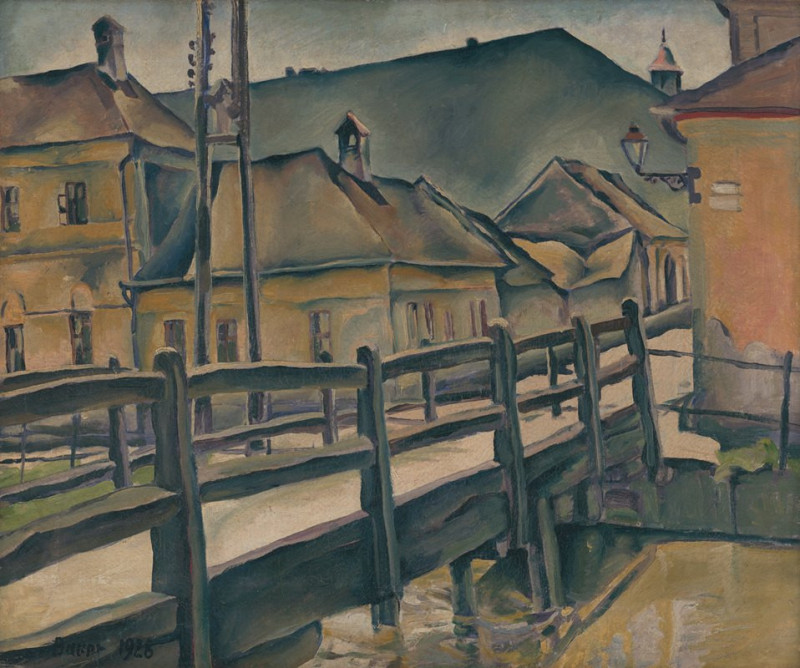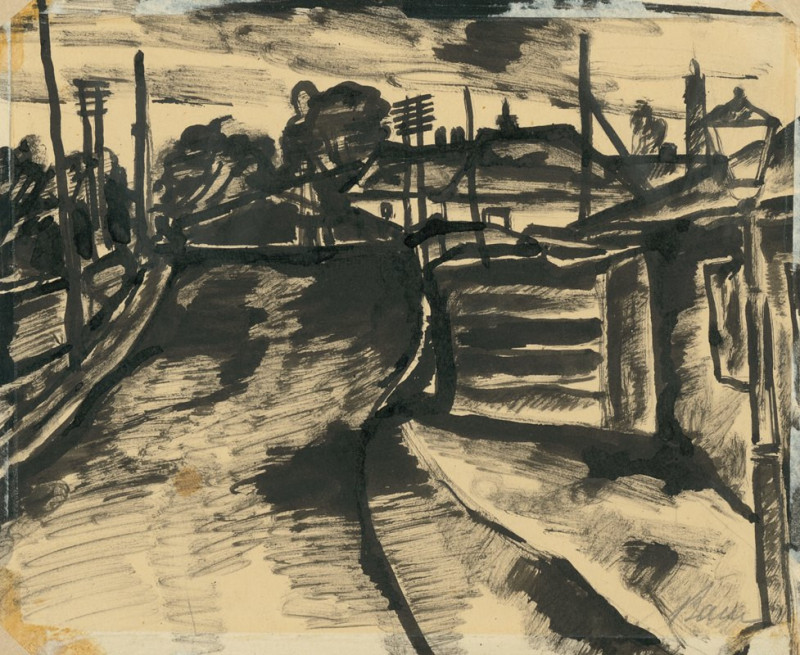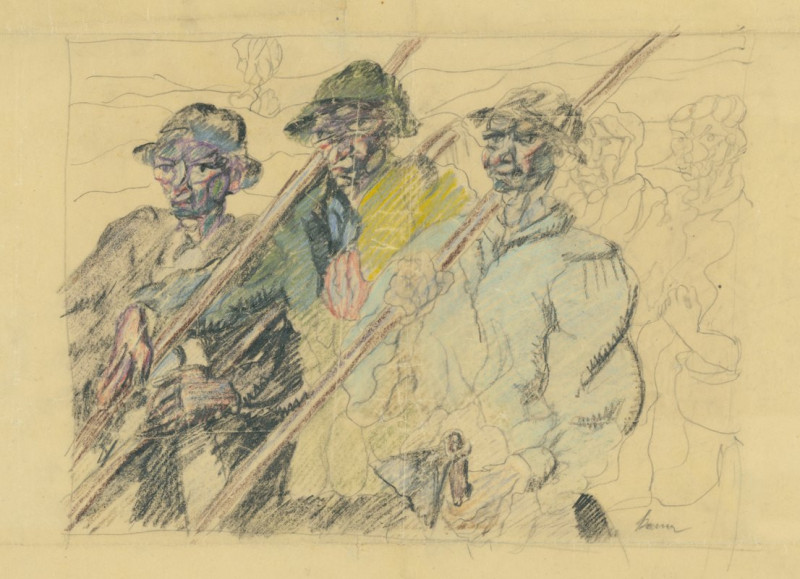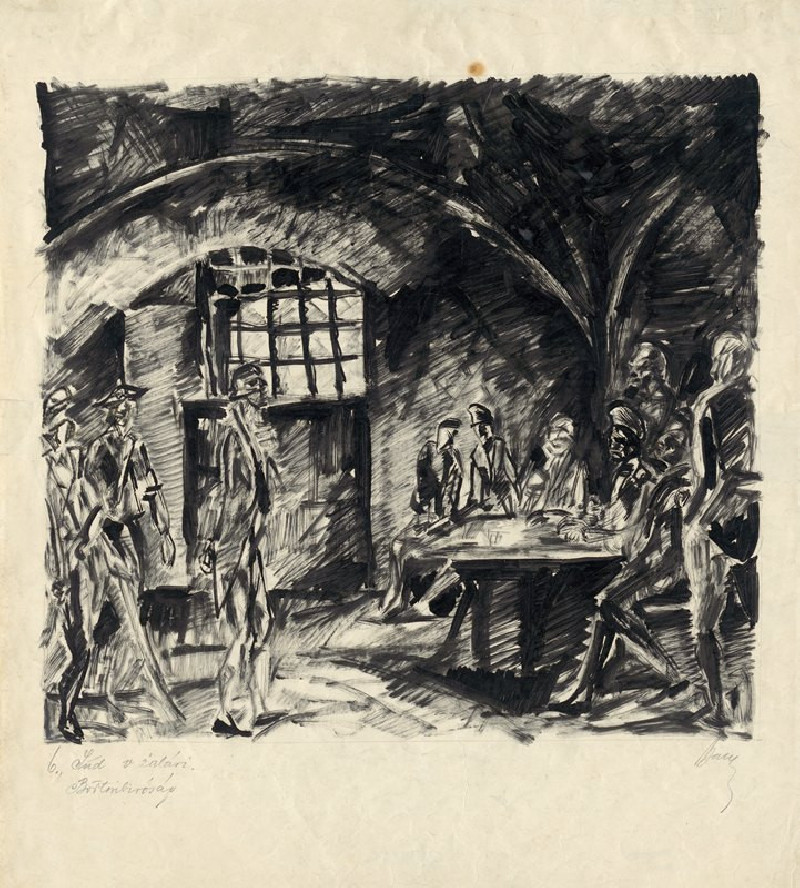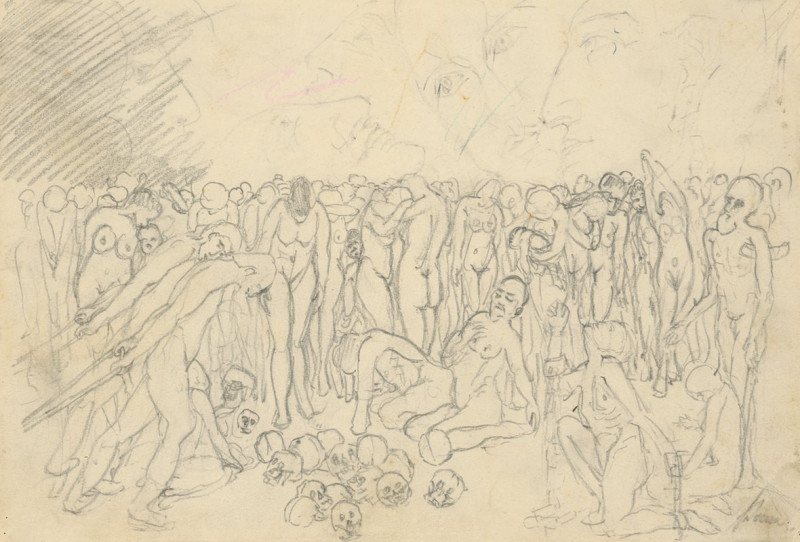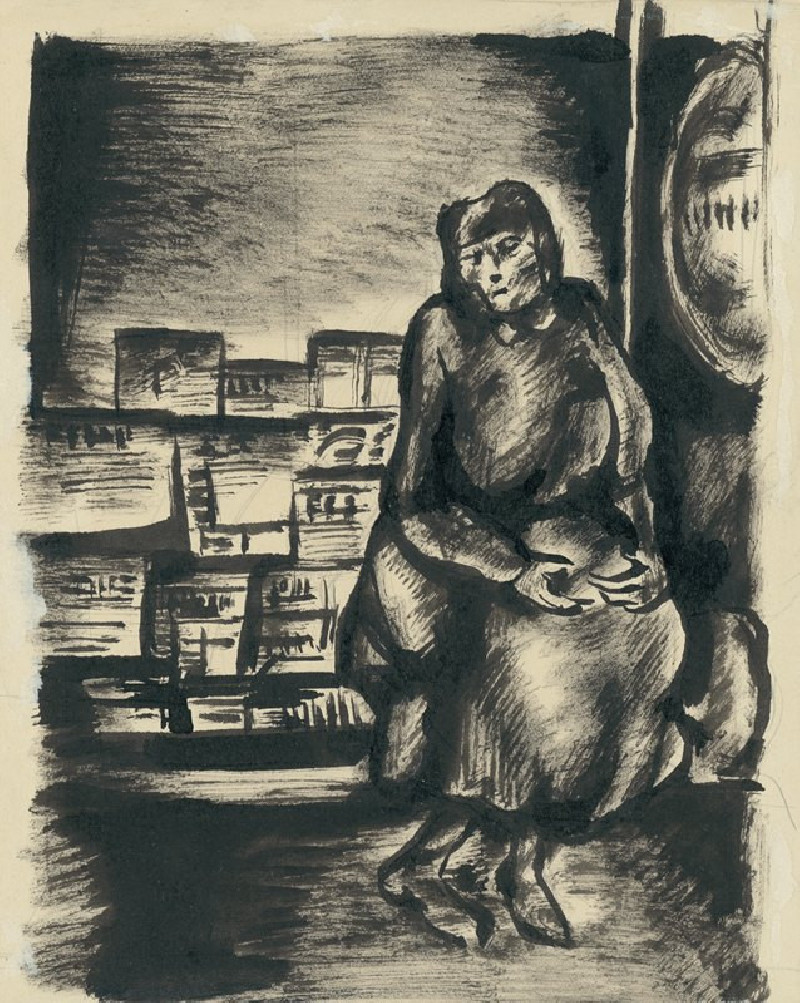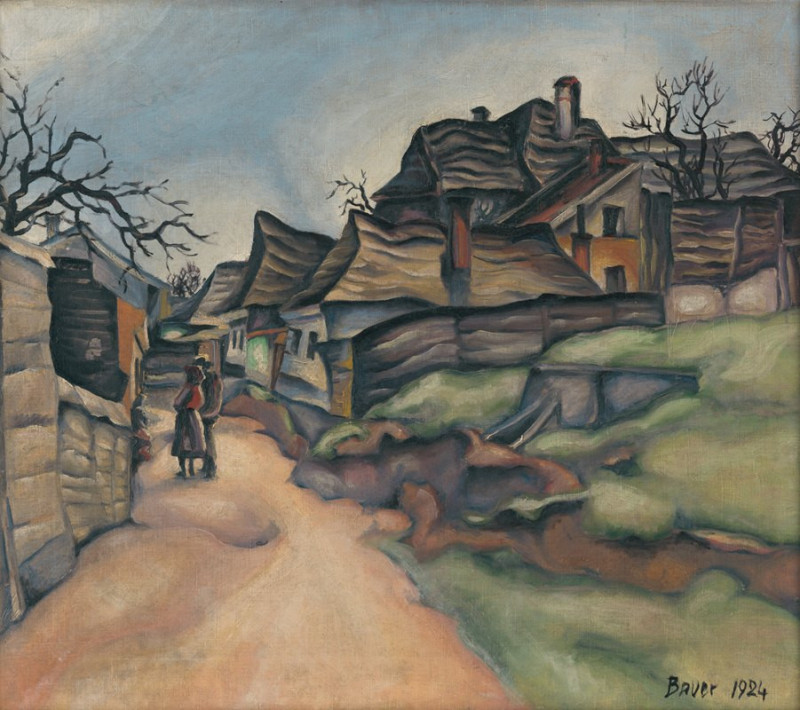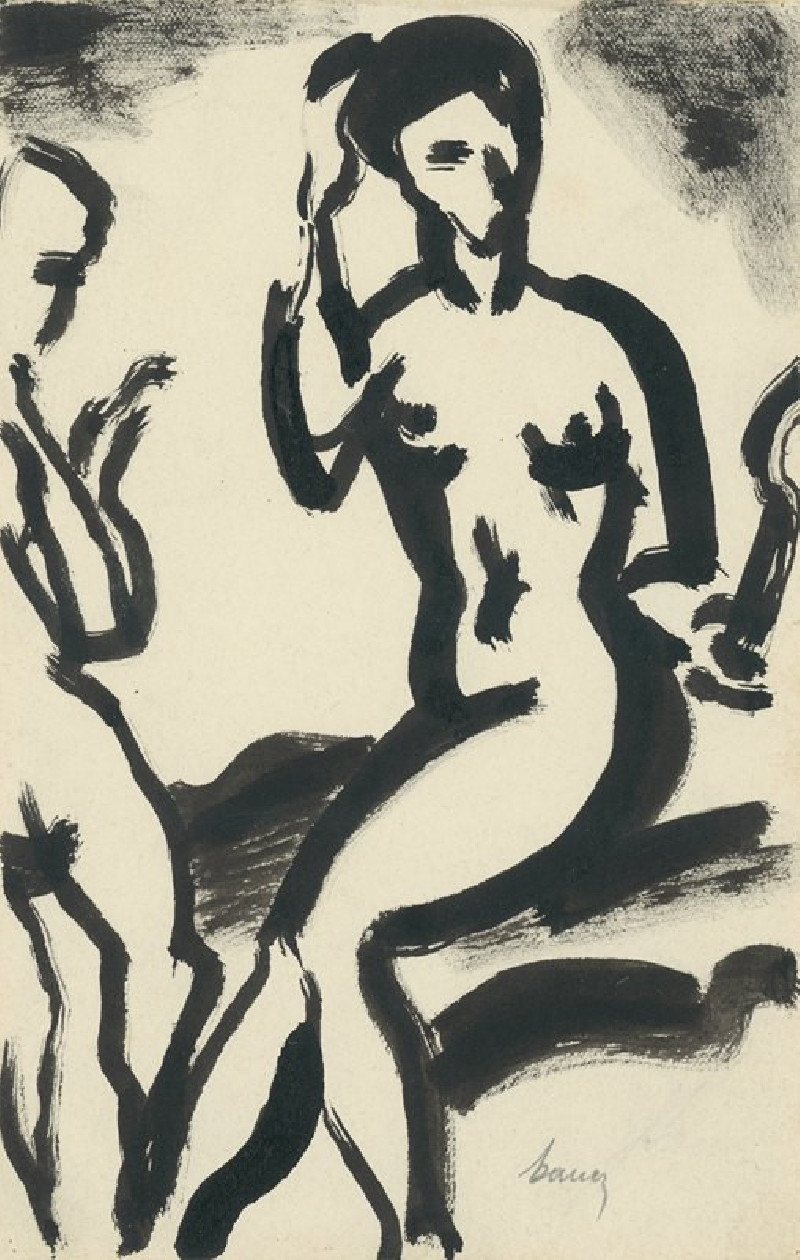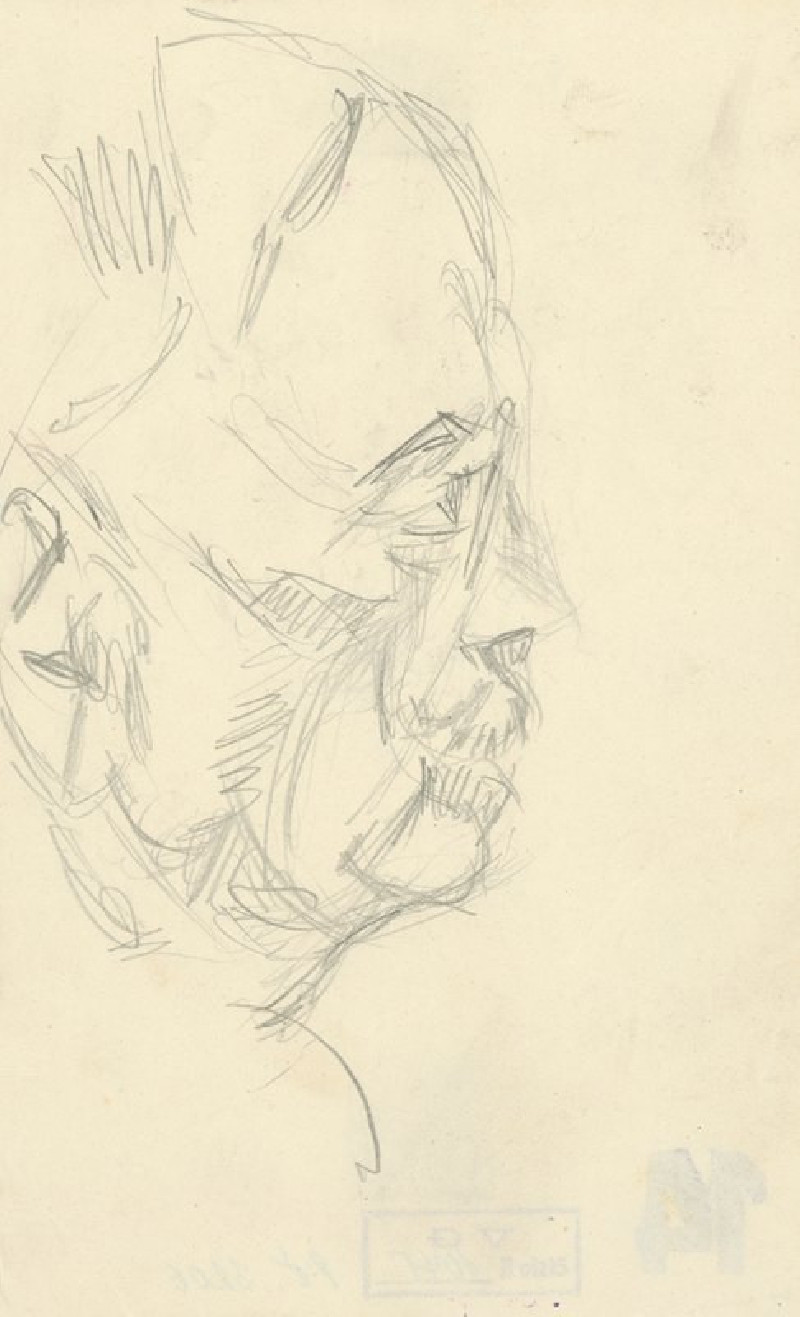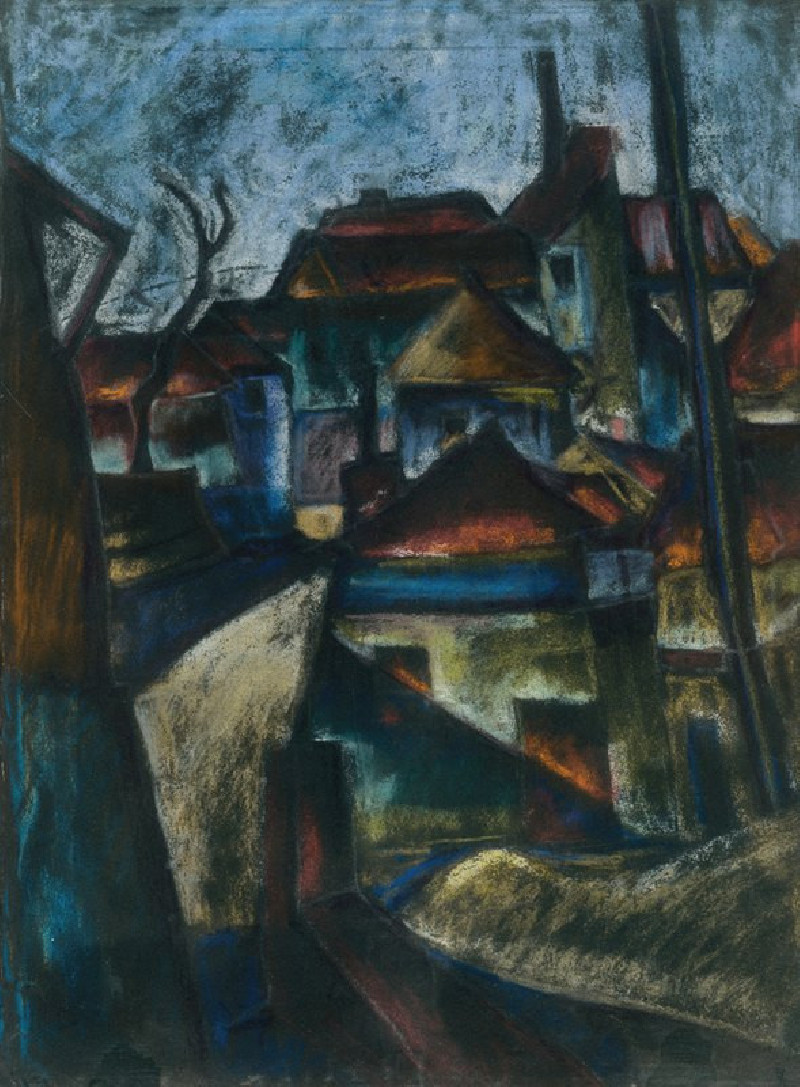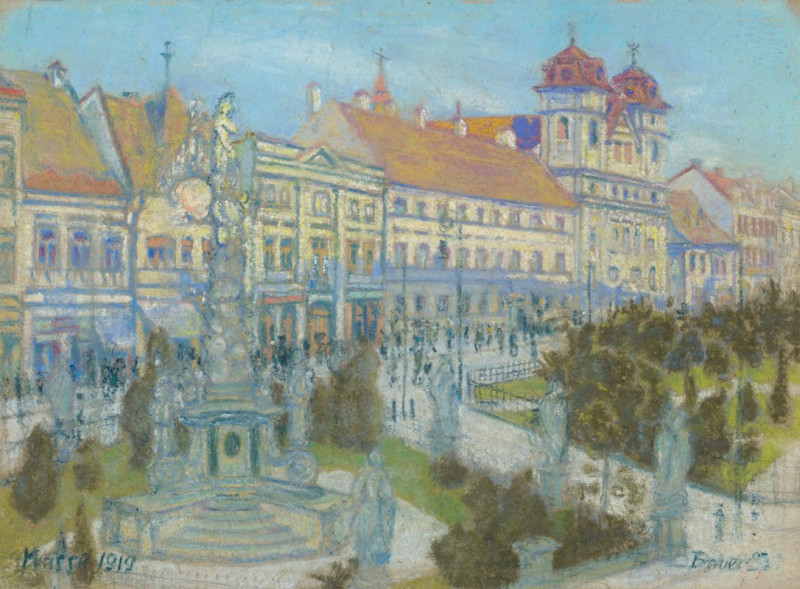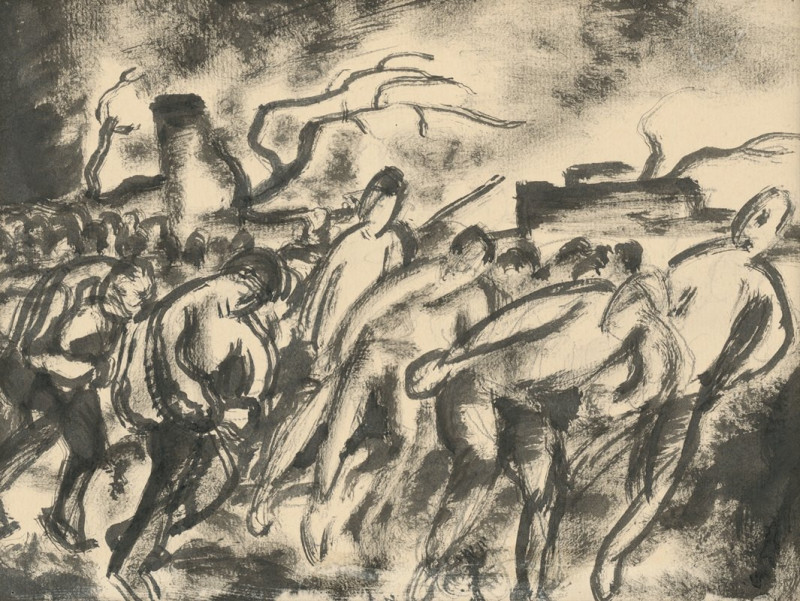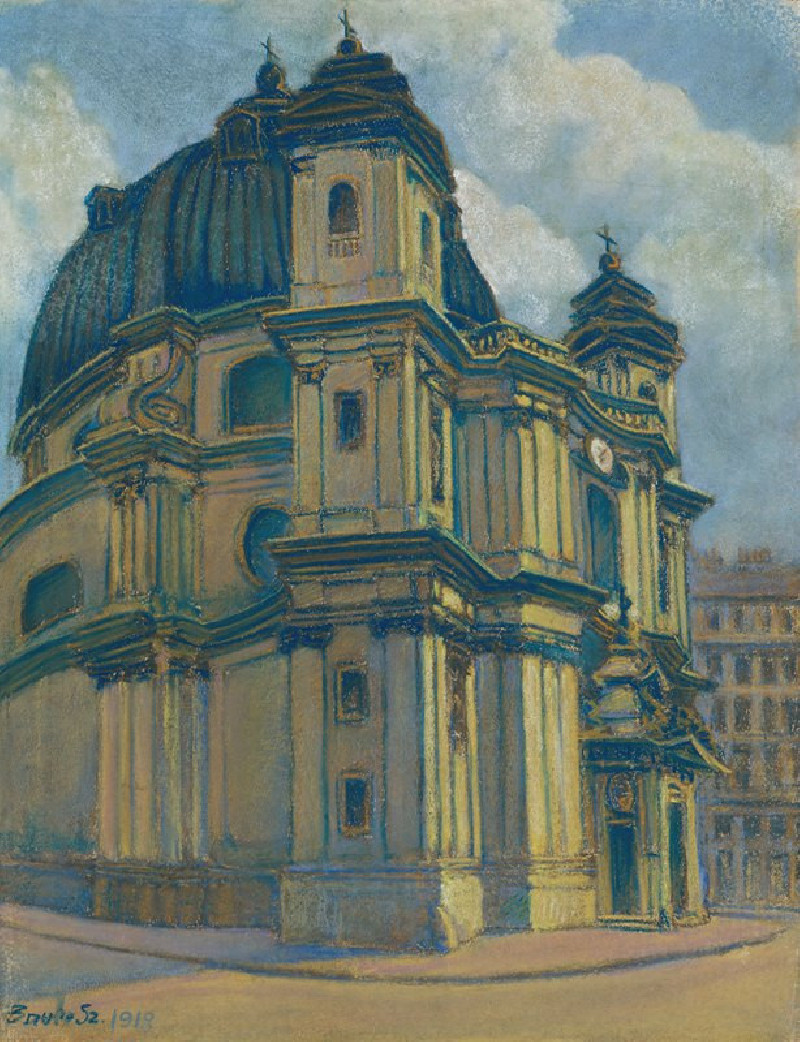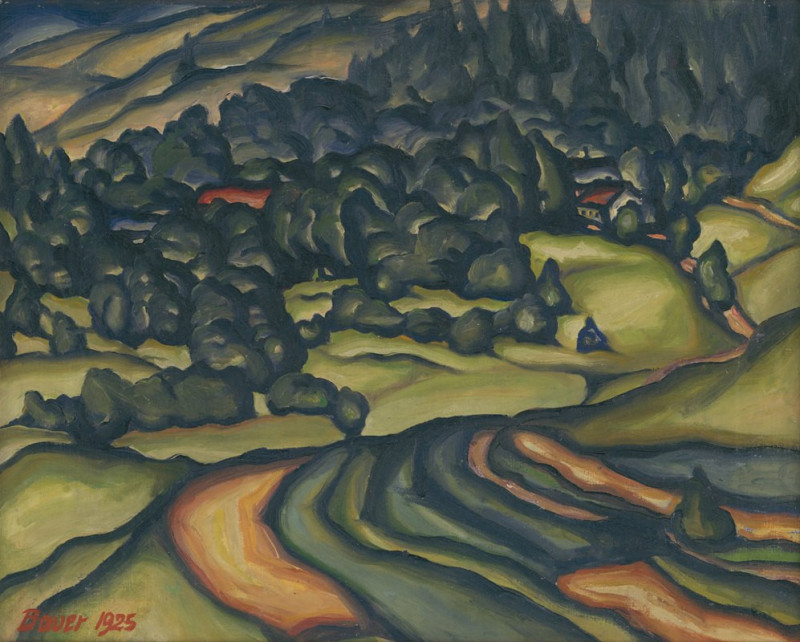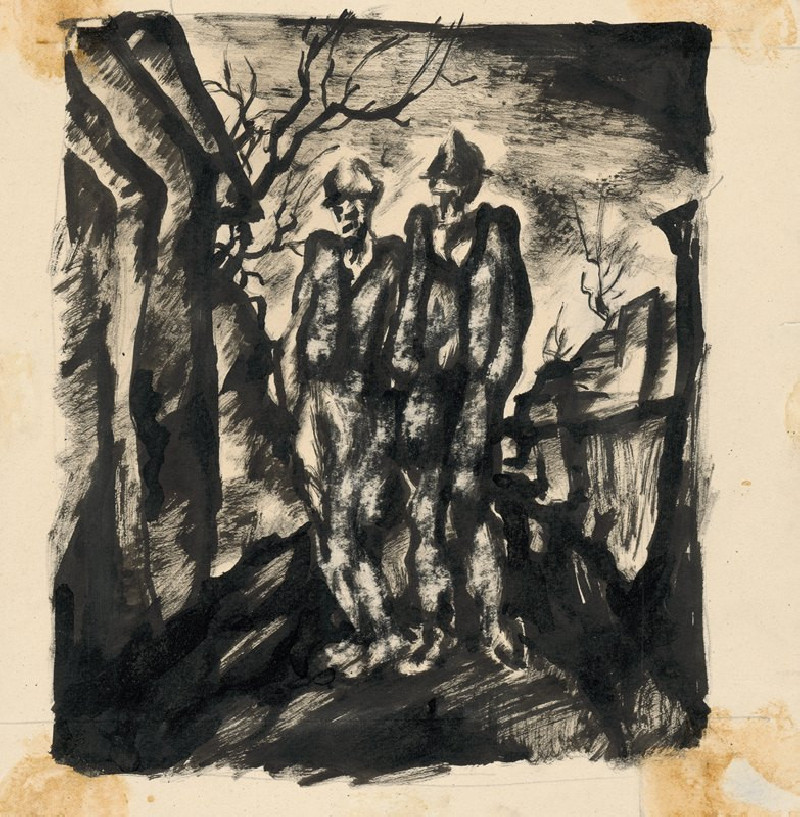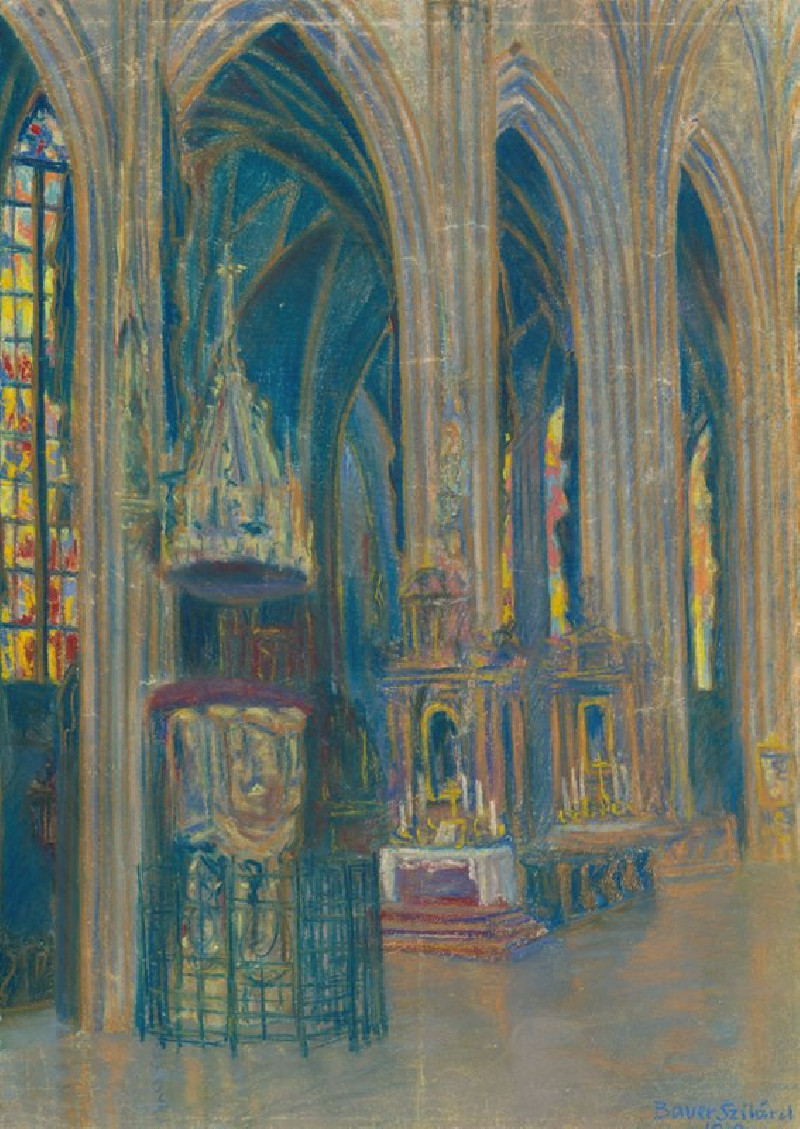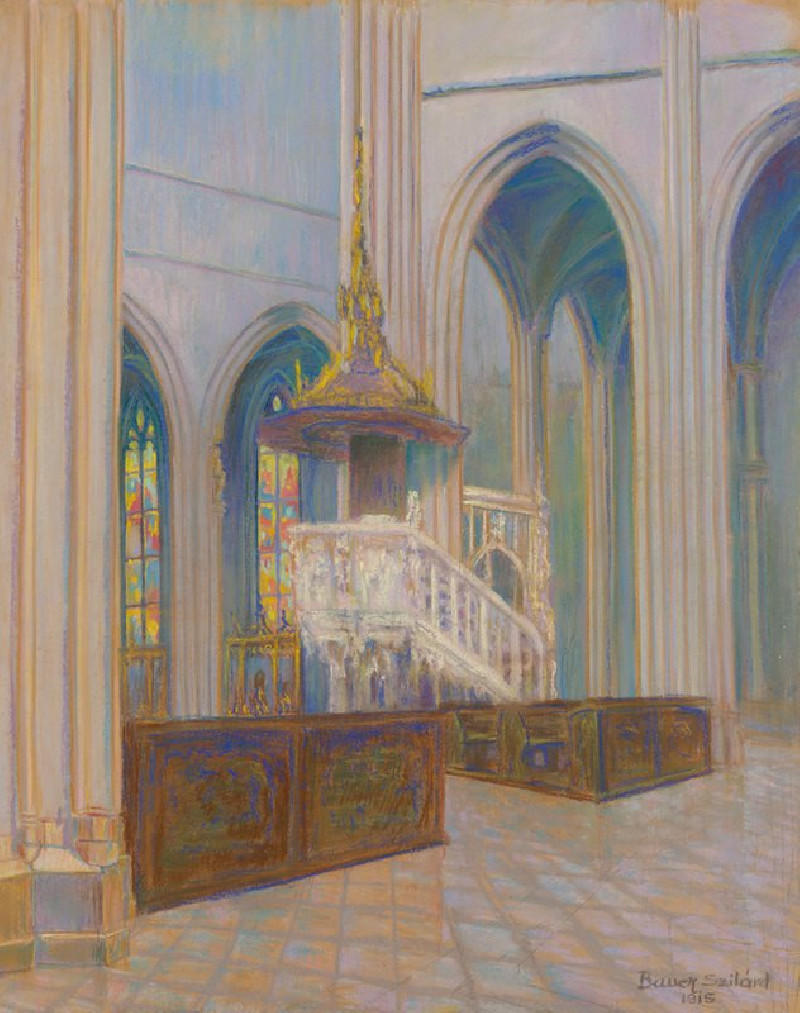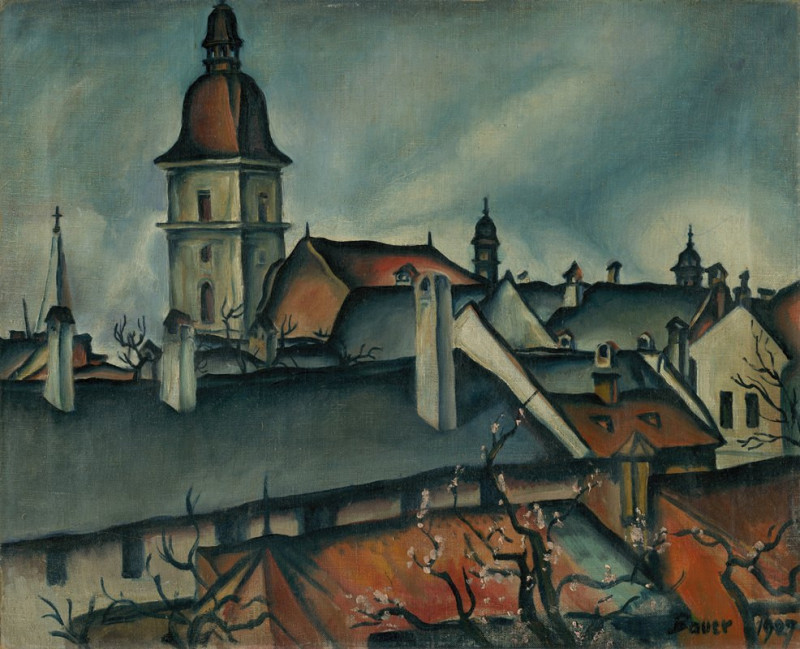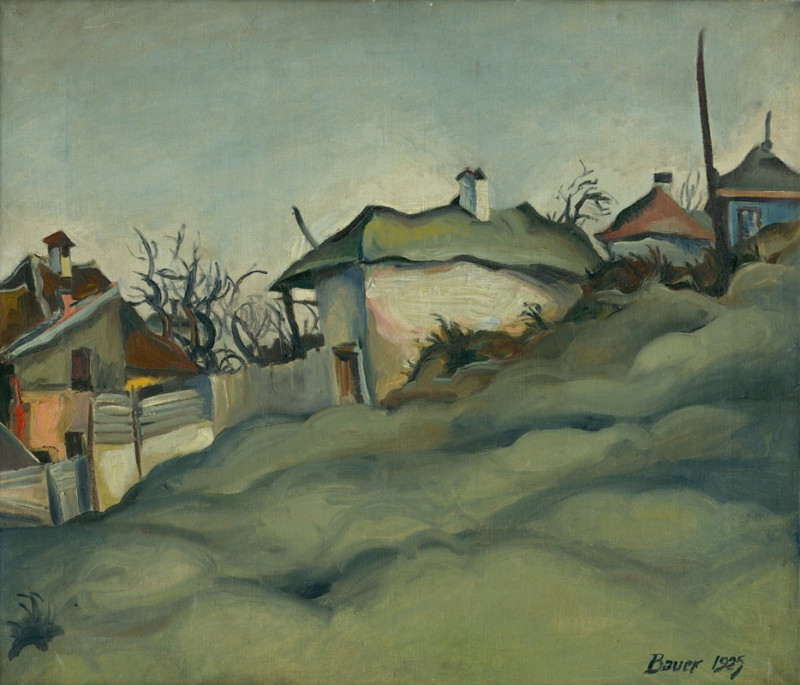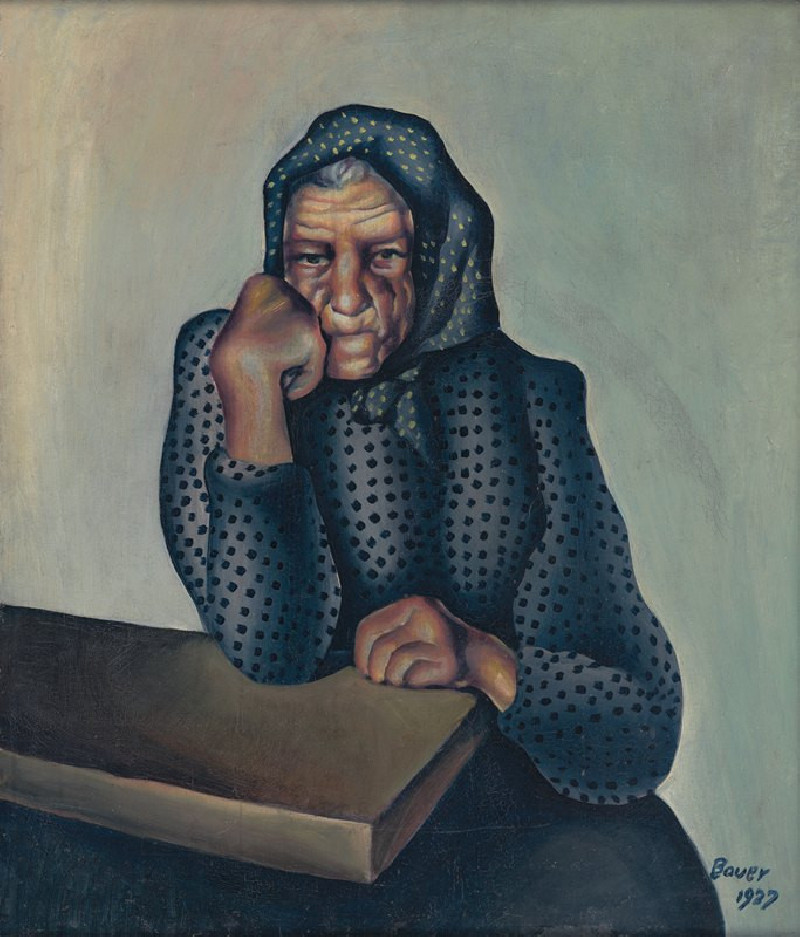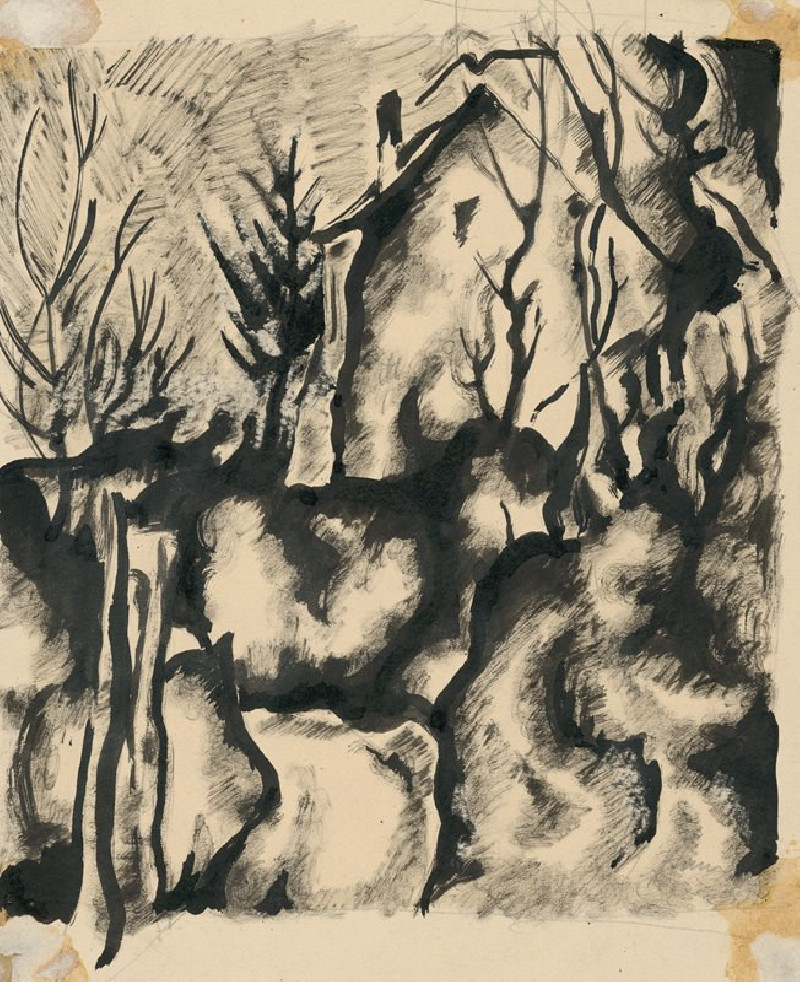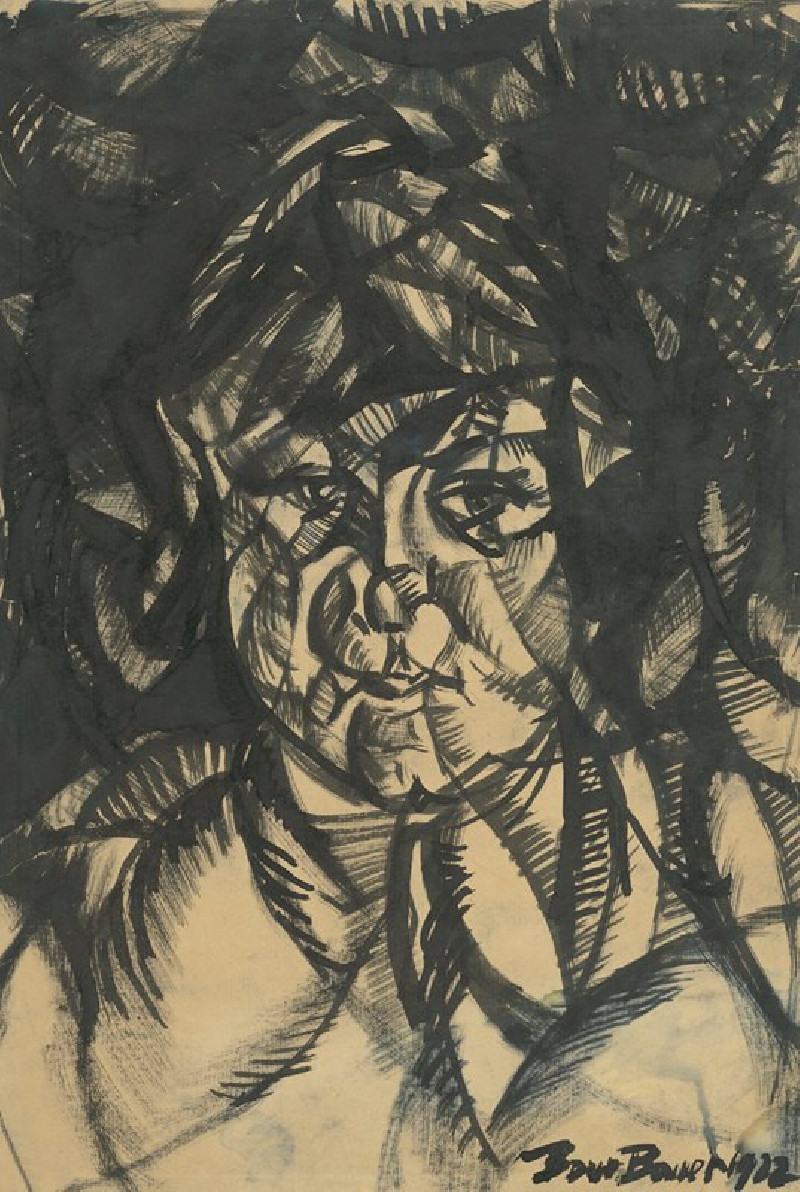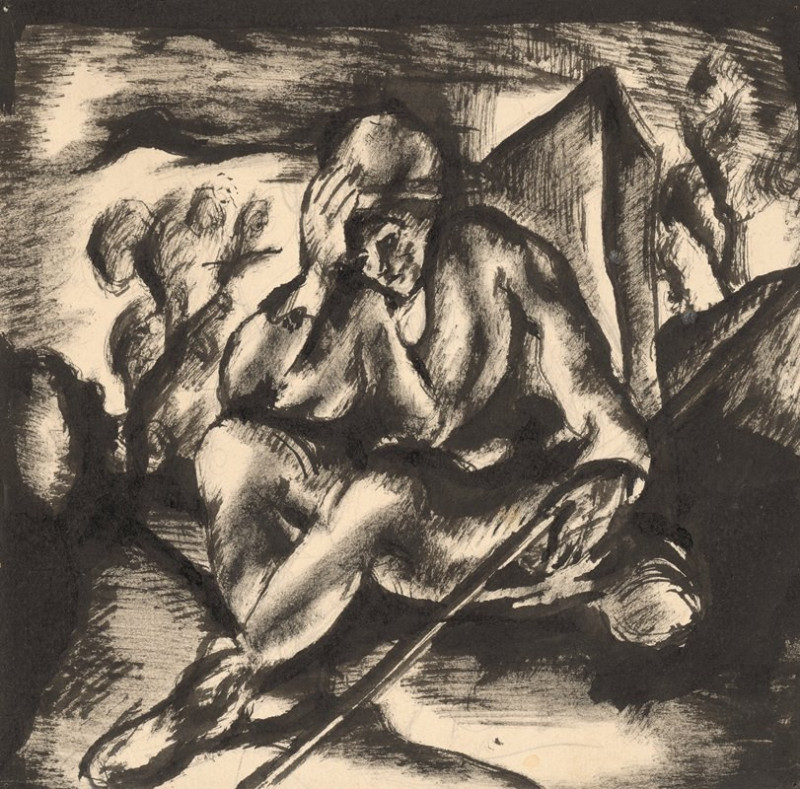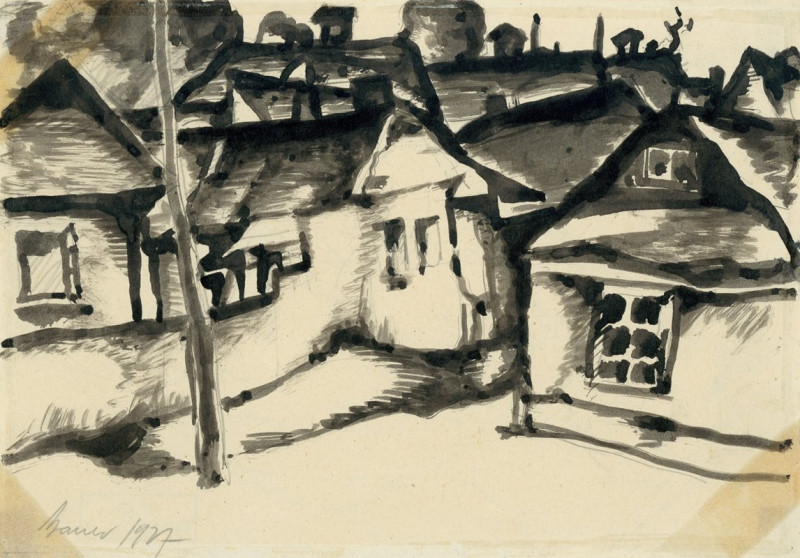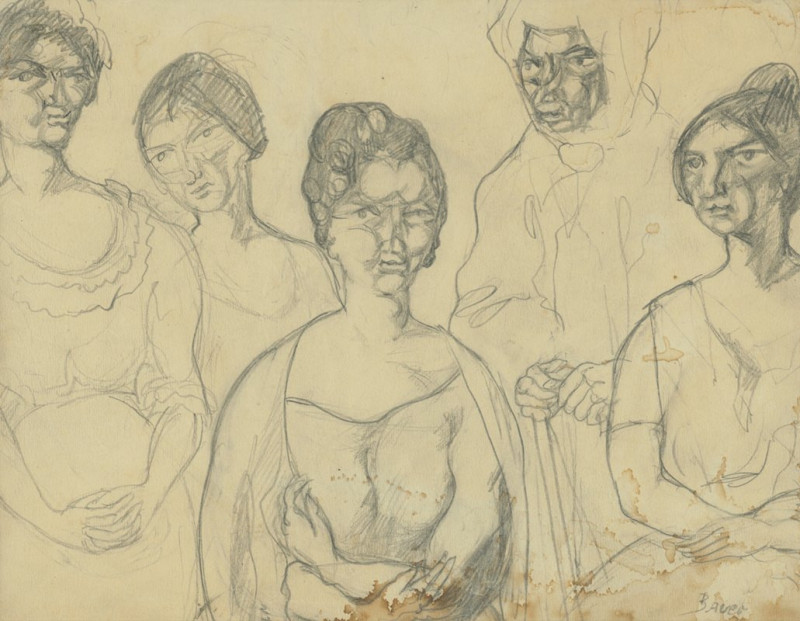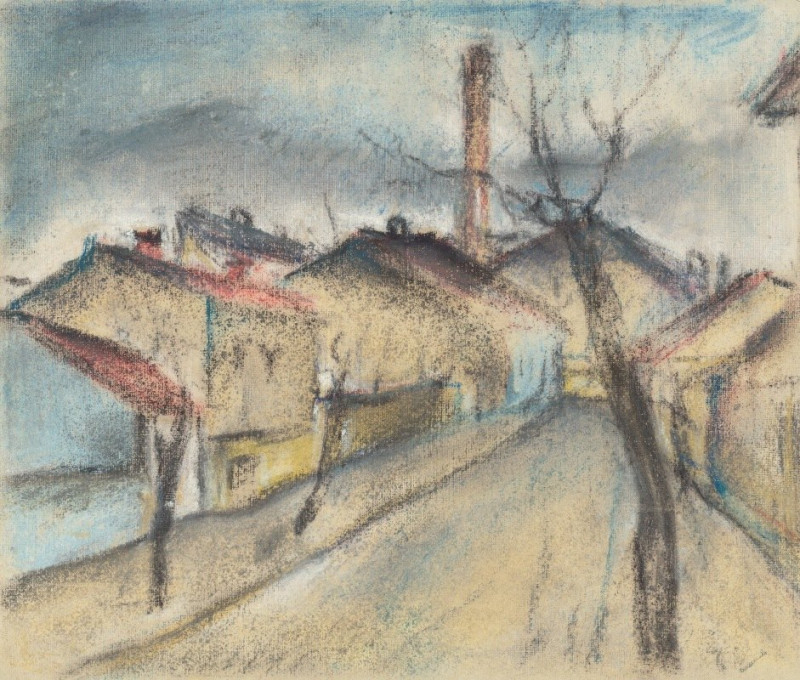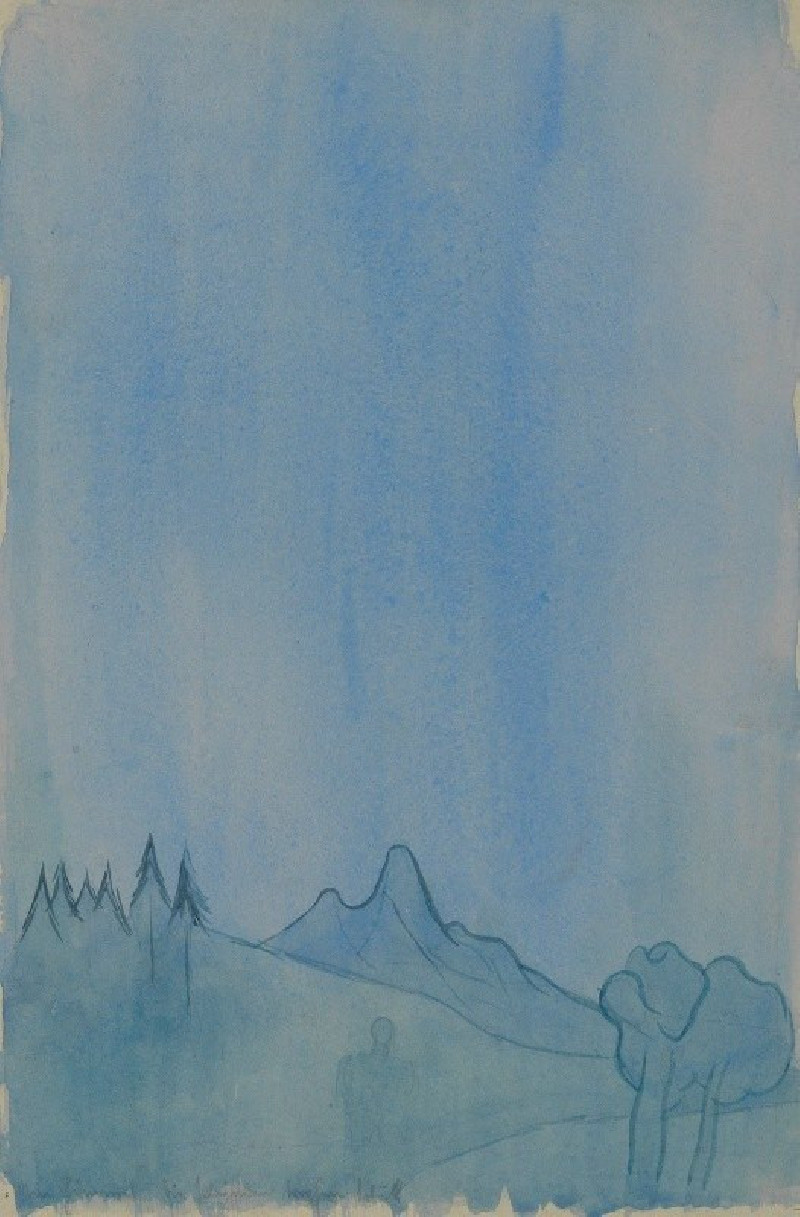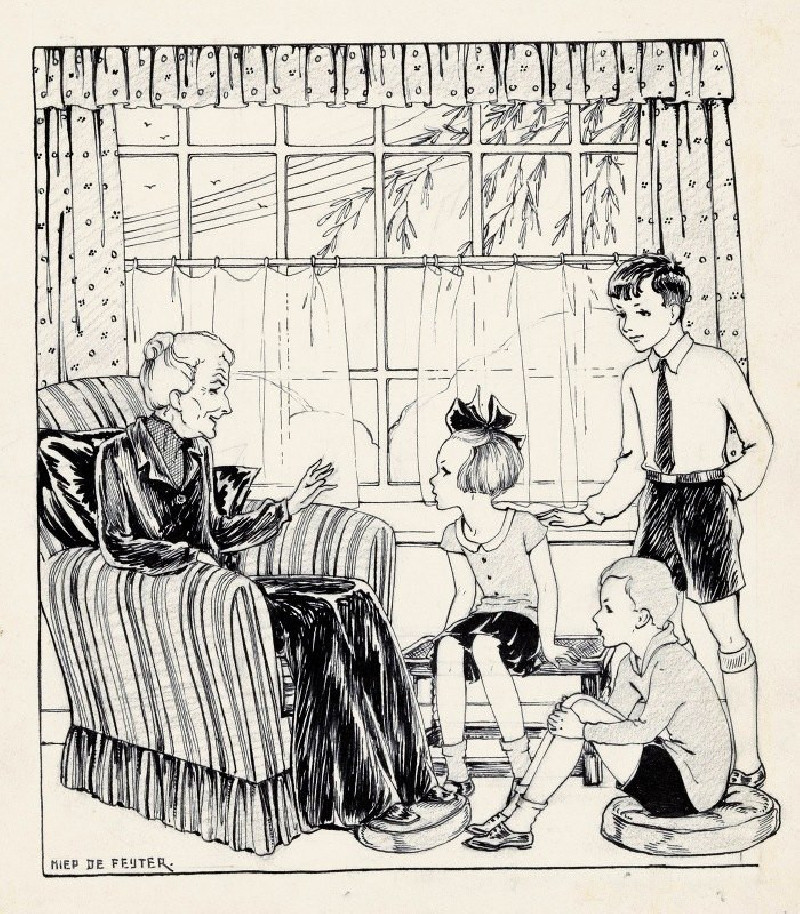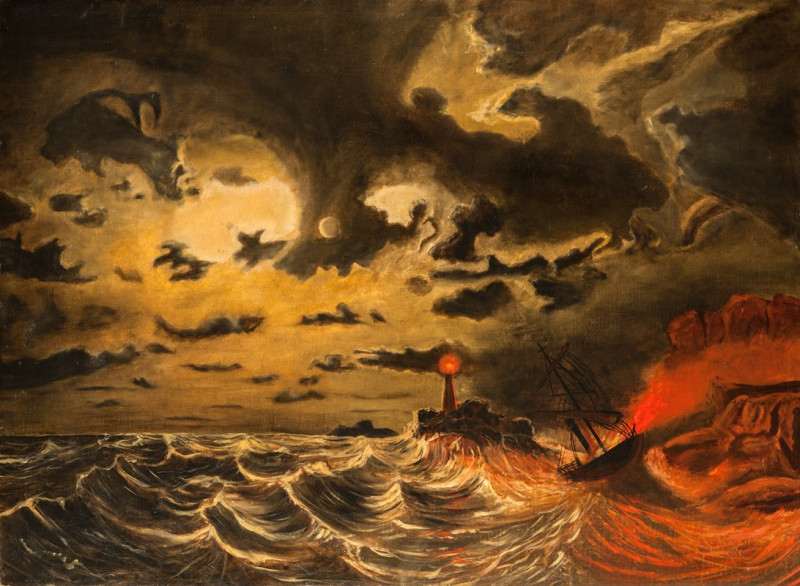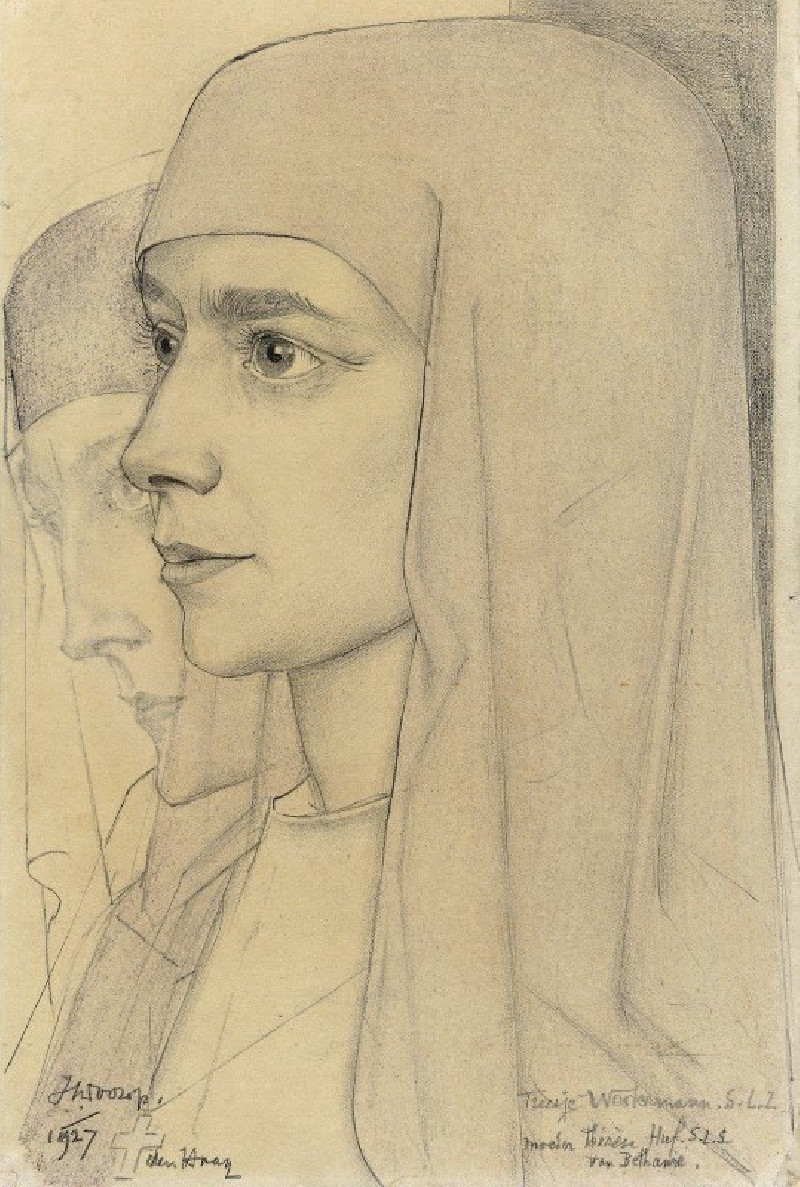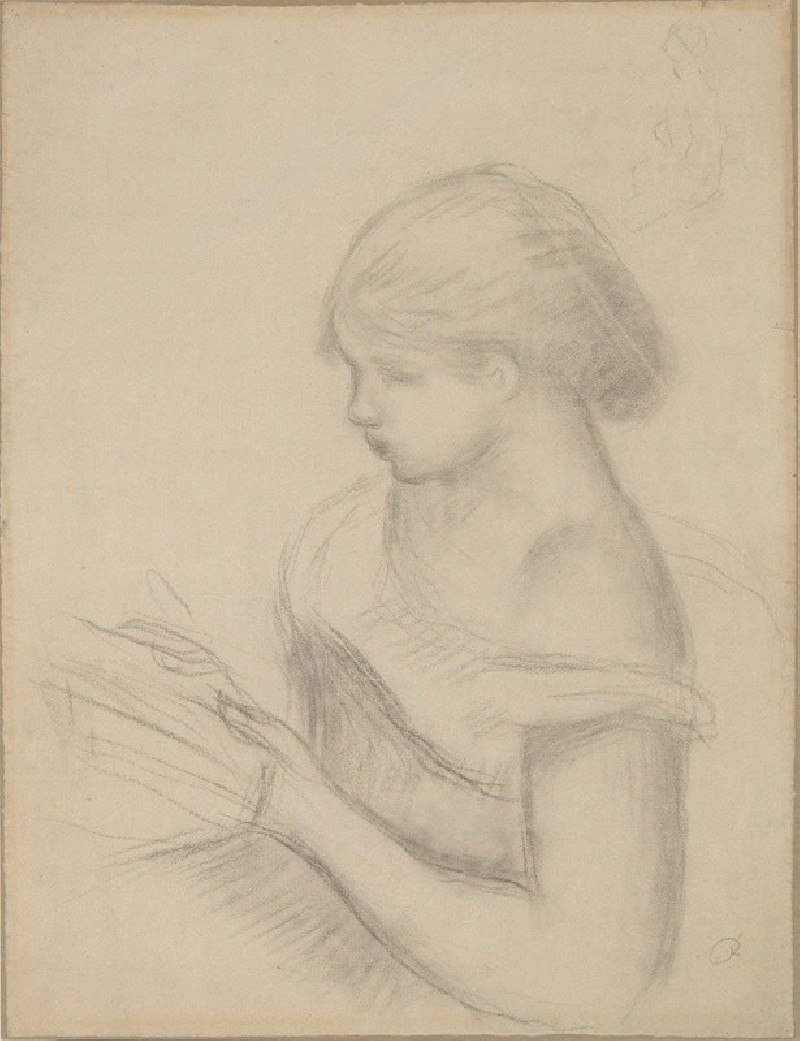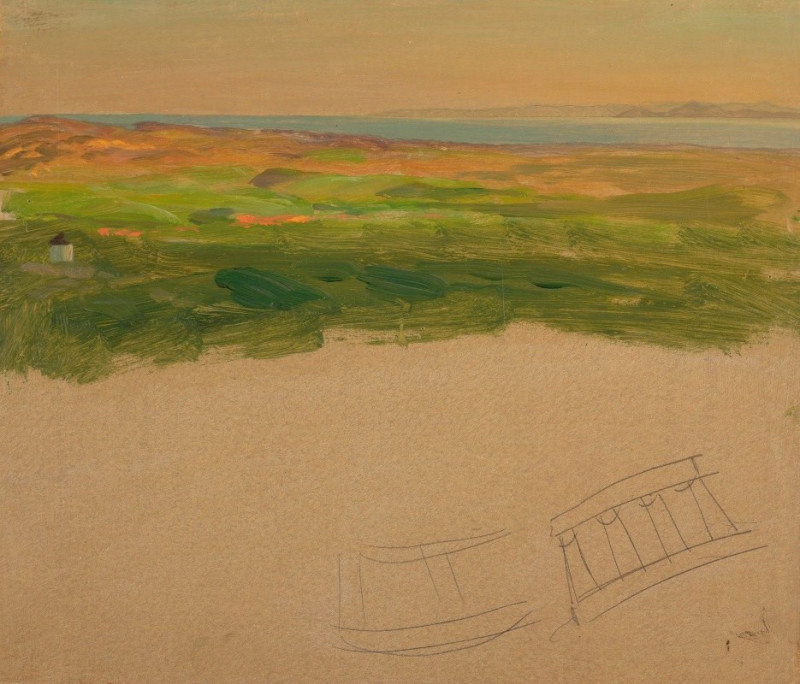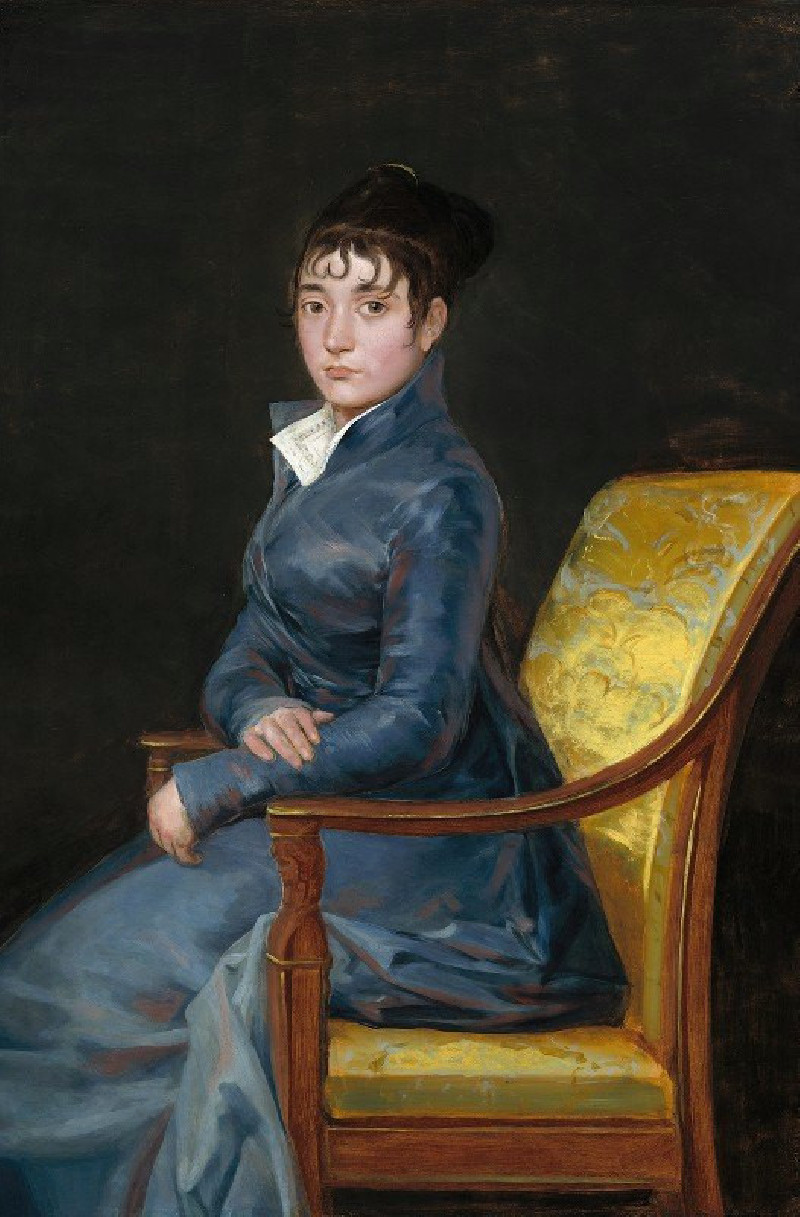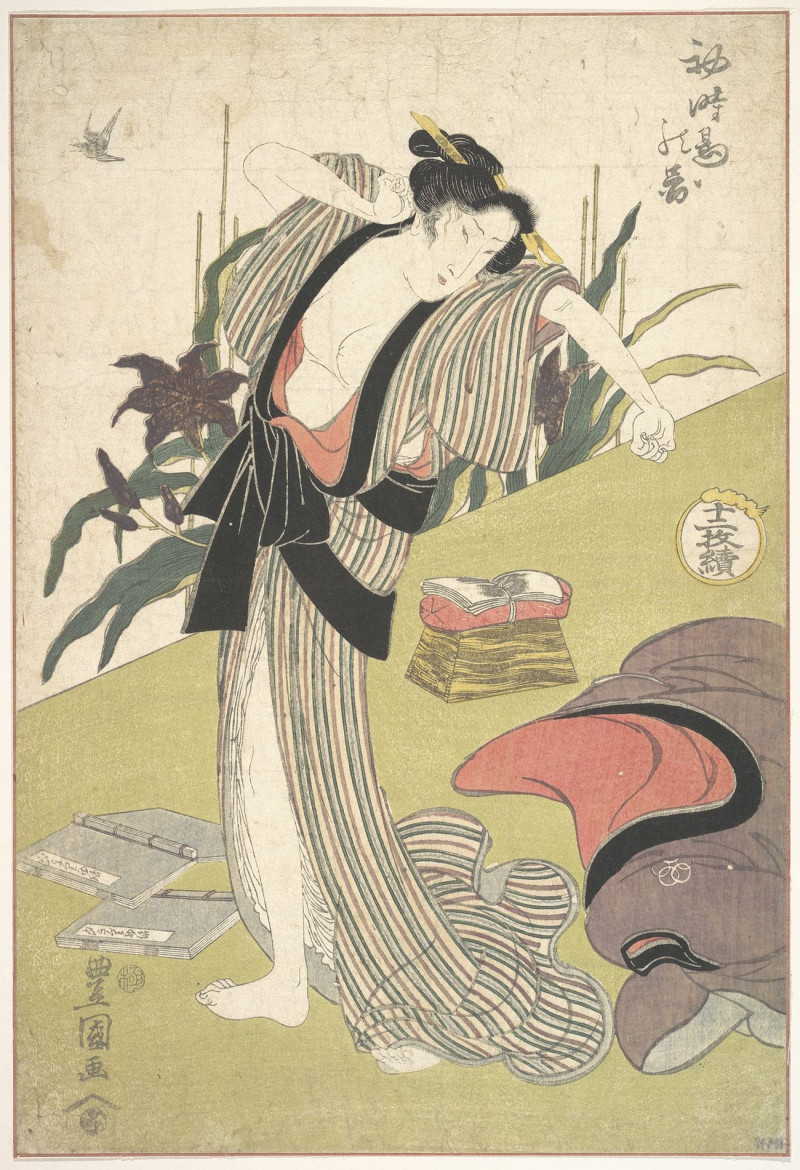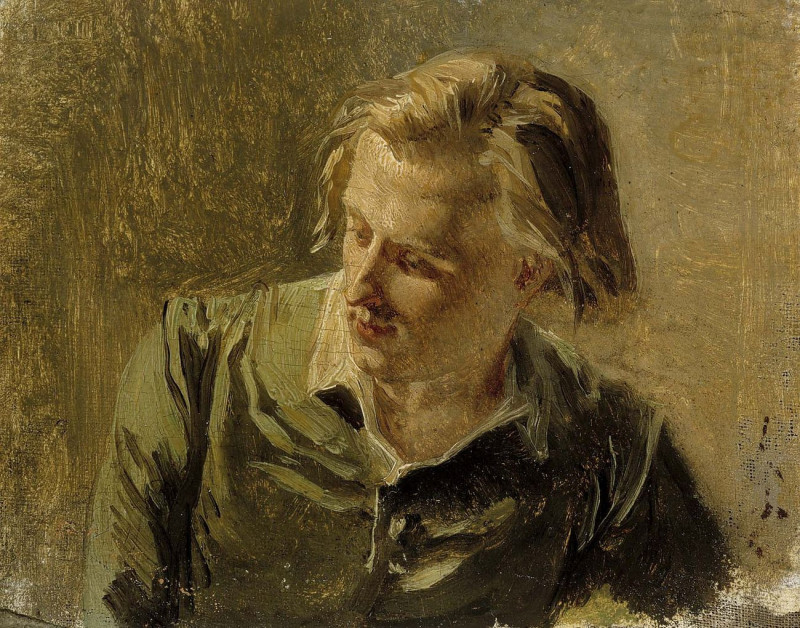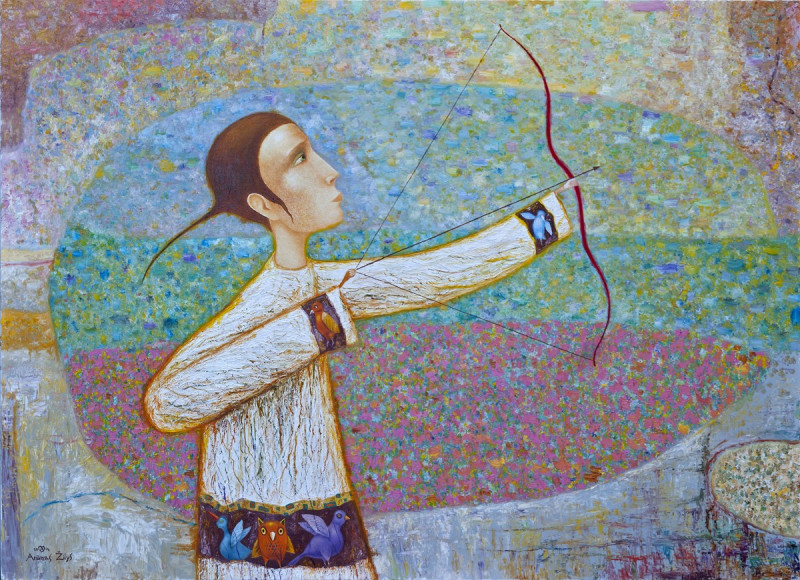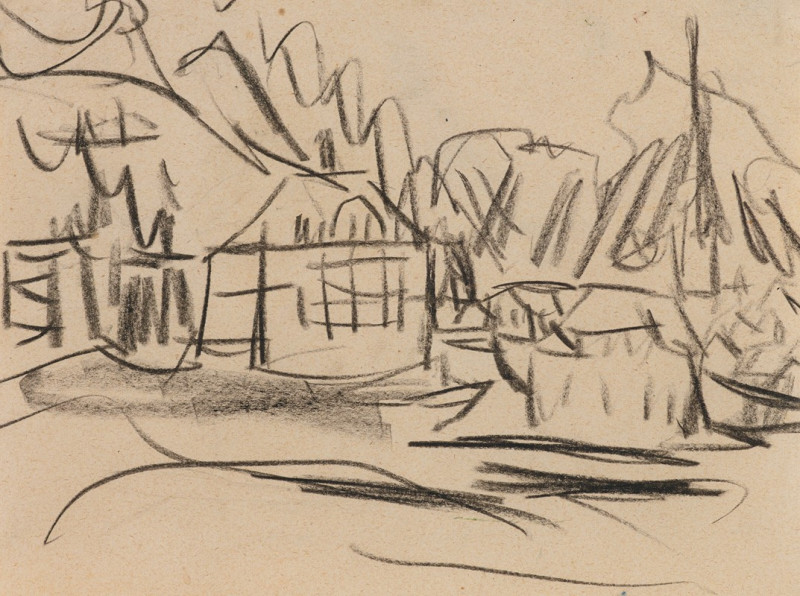V parku (1924–1927)
Technique: Giclée quality print
Recommended by our customers
More about this artwork
Description:"V parku," a captivating ink on paper artwork by Slovak artist Konštantín Bauer, offers a glimpse into a serene moment in a park setting from the mid-1920s. The artwork vividly conveys the fluidity and ease of everyday life through Bauer’s expressive brush strokes. The composition centers around two figures, likely enjoying a peaceful discussion, seated comfortably on park benches. Their relaxed postures and the casual overlap of their forms suggest a close companionship. Surrounding them, the park itself is depicted with swift, dynamic lines that evoke the swaying of trees and rustle of leaves, bringing an energetic contrast to the tranquility of the seated figures.This piece is a masterful example of how minimalistic, yet powerful lines can create a deeply atmospheric scene, transporting viewers to a shaded, tranquil park.
Delivery
Returns
Konštantín Bauer was a Slovak painter.
Konštantín Bauer was born on November 24, 1893 in Slovenská Ľupča. He spent his childhood in Banská Bystrica. At the age of fifteen, he moved with his parents to Košice, where he graduated from high school. After graduating in mechanical engineering in Budapest in 1915, he worked briefly as an engineer in Novo Mesto pod Šiatrom. From 1916 to 1918 he worked as a railway engineer in Transylvania and then as a civilian employee at the Ministry of War in Vienna.


